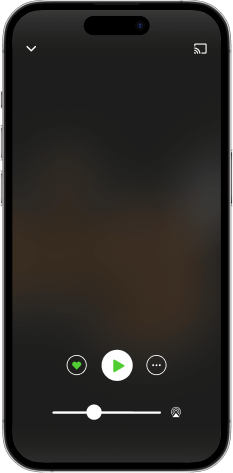The Universal Language of Music: A Conversation with Stephen Ridley - Part 2
“And then his youngest daughter, who’s six years old, comes up, and she’s into gymnastics and she’s kind of cartwheeling around the room while everyone else is playing. And then, ‘All right, she’s going to play you a song.’ And she comes up, and she’s all full of beans, and then she sits down and she plays the most somber Debussy song. And it was, like, there was so much soul in what she played for a six-year-old. I’m like, ‘whoa!’ Like, the amount of depth in what she did was, like, whoa! ‘You are, like, a wise young girl.’ That’s an old soul. And I looked at him, and he’s crying. And then at the end of this evening, we again get to talking about AI, and he was asking, this comes full circle, this is the reason I bring this story up, is he’s invested heavily in various different AI projects. And one of them is this company that’s gonna be, like, a prompt and then it makes music. And he said, ‘Well, you know it’s cool, but are you not worried about AI, like, taking you out?’ And I was like, ‘Well, do you think I should be? You probably know better than me.’ And he said, ‘Well, you know, AI can do exactly what she just did, just so you know, like right now, I could get AI to play that song and it can play it perfectly.’ I was like, ‘Yeah, but would it make you cry?’" – Stephen Ridley This is the 300th episode of Audio Branding: The Hidden Gem of Marketing, and my conversation with international pianist and founder of the Ridley Academy, Stephen Ridley, continues as we discuss why Stephen prefers live performances to studio recordings, the school he’s now running to help others find their own passion for music, and the one song he’s vowed to never play on the piano. As always, if you have questions for my guest, you’re welcome to reach out through the links in the show notes. If you have questions for me, visit audiobrandingpodcast.com, where you’ll find a lot of ways to get in touch. Plus, subscribing to the newsletter will let you know when the new podcasts are available, along with other interesting bits of audio-related news. And if you’re getting some value from listening, the best ways to show your support are to share this podcast with a friend and leave an honest review. Both those things really help, and I’d love to feature your review on future podcasts. You can leave one either in written or in voice format from the podcast’s main page. I would so appreciate that. (0:00:01) - The Future of Creativity and AIThe second half of our conversation picks up with Stephen’s illuminating discussion of AI with a billionaire tech investor, and where he sees AI leading us in the future. “There are a lot of things in life where we don’t necessarily need to put ourselves into it,” he explains. “They don’t require our imagination, creativity, any spiritual anything. Those things probably can be replaced by AI.” We discuss AI’s limitations as a way of conveying emotion, and where the new economy might lead us once machines are handling the busy work. “I actually think the future economy will be heavily into creativity, and into art,” Stephen adds, “since I think that’s exactly where culture will go.”(0:07:16) – The Unique Power of Live EntertainmentStephen recalls his brief and unexpected foray into iTunes after discovering that a record label had uploaded his music without permission. “They’re like, ‘Okay, if you don’t like it, sue us.’ And obviously I wasn’t in a position to do that, and they have all the money in the world,” he explains. “So I was like, ‘Okay, well, I can’t do that, but what I can do is remove it. So I just removed it.” He talks about why, even though he’s starting to return to social


